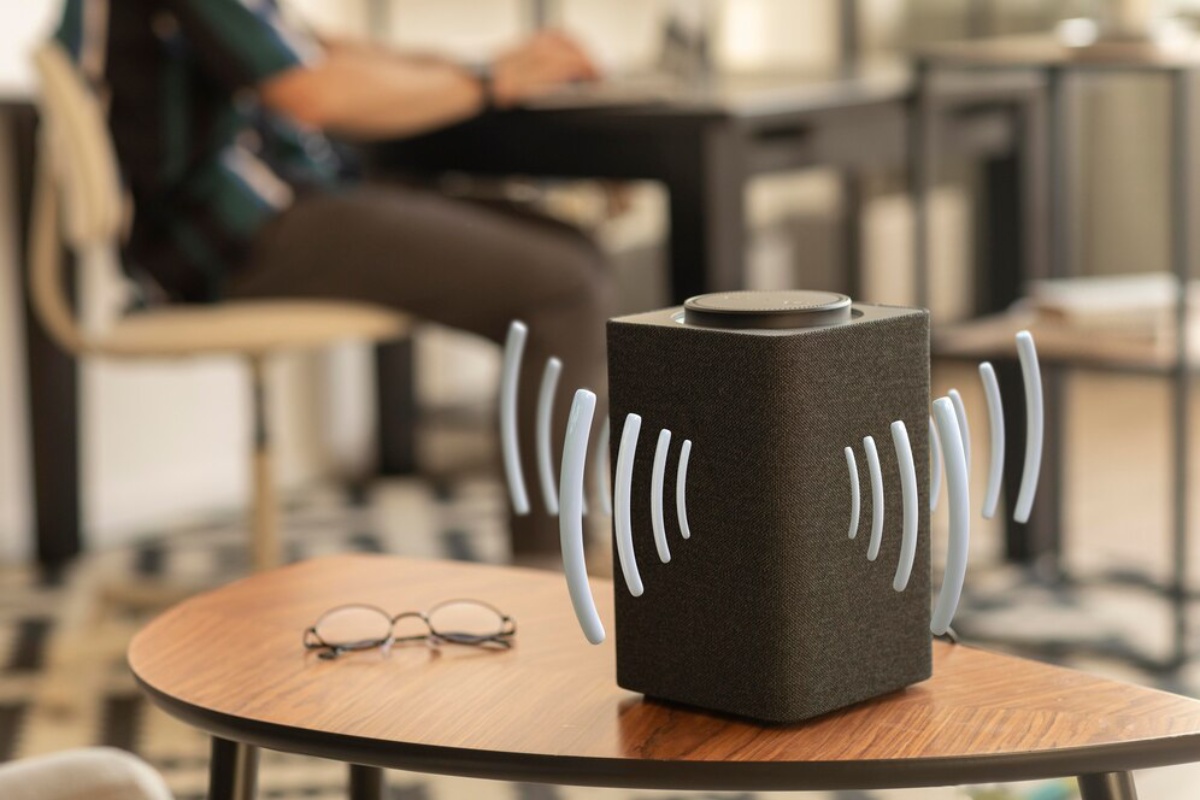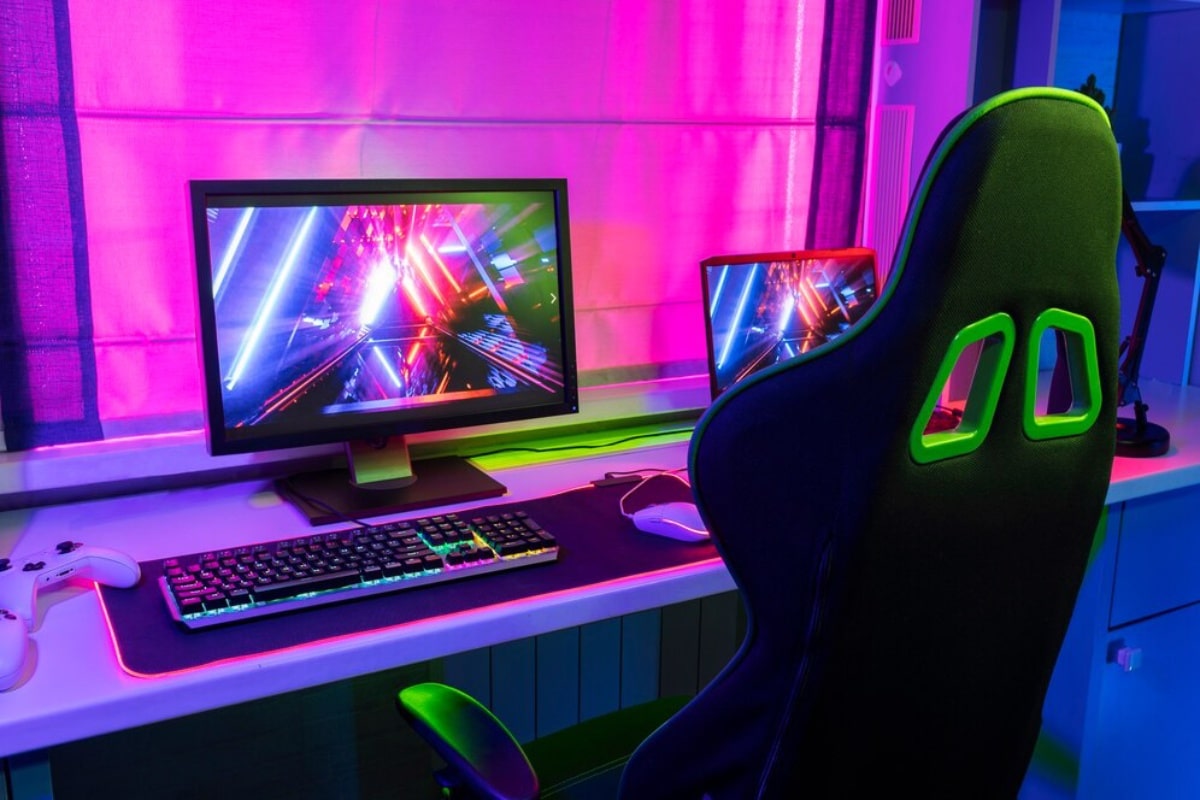
Surround Sound vs Stereo for Gamers
Picture this: you’re deep in a tense multiplayer match. You hear footsteps — are they to your left? Behind you? Or are they just in your head because your headset can’t pinpoint direction correctly?
Sound in gaming isn’t just about explosions and background music. It’s a powerful tool that can help you win matches, feel more immersed, and communicate more clearly. And when it comes to choosing between surround sound gaming and stereo, things can get a bit murky.
Both setups offer different benefits, and the best choice often depends on what, how, and where you play.
In this guide, we’ll explain the difference between stereo and surround sound for gaming, help you understand what works best for your setup, and give you expert-backed, real-world advice to make an informed and budget—friendly decision.
What’s the Difference Between Stereo and Surround Sound?

Let’s start with the basics.
Stereo Sound
Stereo audio uses two channels: left and right. It creates a soundstage that feels wide and directional but is essentially two-dimensional. Most standard headphones and speakers offer stereo by default.
Key Traits:
- Two audio channels (left and right)
- Simpler and often cheaper
- Works well with most games and music
- Clear distinction between left/right positioning
Surround Sound
Surround sound , on the other hand, uses multiple channels (often 5.1 or 7.1) to create a 360-degree audio field. It aims to replicate how we hear in real life, with sound coming from all directions.
Key Traits:
- Multiple audio channels (front, rear, side, subwoofer)
- More immersive and cinematic
- Great for FPS and story-driven games
- Often needs specific hardware or software support
Some setups are virtual surround (processed through software), while others are true surround (multiple drivers or speakers positioned physically around you).
Stereo vs Surround Sound Gaming: The Pros and Cons
To help you decide, here’s a breakdown of how both systems stack up for different gaming needs.
Competitive Gaming: Think Tactics and Precision
Winner: Stereo (with high-quality drivers)
Why? Many esports pros prefer stereo headsets because they deliver faster, cleaner directional cues, especially when paired with optimised stereo mixing games (like CS: GO, Valorant, or Apex Legends).
Pros of Stereo:
- Lower latency and fewer processing delays
- Better sound accuracy for pinpointing enemies
- Usually lighter and more comfortable for long sessions
Cons:
- Limited depth — you get left/right, but not always up/down or behind
Pro Tip: High-end stereo headsets (like the Sennheiser Game One or Audio-Technica ATH-GDL3) often outperform mid-range surround options regarding pure directional accuracy.
Immersive Gaming: Story-Driven, Open World, Cinematic
Winner: Surround Sound (primarily virtual 7.1 or Dolby Atmos)
Games like The Witcher 3, Cyberpunk 2077, or Red Dead Redemption 2 shine with surround sound. You want to hear birds above, horses behind, or gunfire echoing across the canyon.
Pros of Surround Sound:
- 360-degree immersion
- Better environmental audio and spatial awareness
- Enhanced depth perception in vast, open worlds
Cons:
- It can sound muddy if poorly implemented
- May introduce latency or artefacts in competitive games
- Requires software support or multi-driver setups
Pro Tip: Dolby Atmos or Windows Sonic for headphones can provide virtual surround with your current stereo headset, so there is no need to buy new hardware.
Console Gaming
Winner: Surround Sound (with system support)
Most modern consoles support surround sound. Xbox has built-in Dolby Atmos and DTS Headphone X support. PlayStation offers Tempest 3D Audio.
Using these with compatible headsets can be a game-changer, quite literally.
Pro Tip: Use headphones that support your console’s native surround processing. The SteelSeries Arctis 7p+ (PlayStation) or Xbox Wireless Headset (for Series X/S) are great examples.
VR and Spatial Audio
Winner: Surround Sound (preferably spatial audio)
In VR, audio isn’t just lovely — it’s necessary. Spatial audio mimics how sound naturally reaches your ears based on your head and body movement. It enhances presence and realism.
Best With:
- VR titles (like Half-Life: Alyx, Beat Sabre, or Resident Evil 4 VR)
- Games that use binaural recording or spatial engines
Real-World Scenarios: Which Setup Fits You?

Let’s match real gamer types to their ideal audio setup.
1. The Esports Grinder
Plays: Call of Duty, Apex, CS: GO, Valorant.
Setup: PC with stereo headphones and zero audio processing
Why: Pure stereo offers less latency, more explicit cues, and consistent directional sound without digital “interpretation”.
2. The Weekend Explorer
Plays: Skyrim, Assassin’s Creed, No Man’s Sky
Setup: Console or PC with virtual surround (Dolby Atmos or DTS)
Why: Immersion trumps precision — you want to feel the world around you.
3. The Streamer

Plays: Variety streamer – story games, shooters, horror
Setup: High-end headset with switchable surround/stereo and onboard EQ
Why: You need flexible sound modes to suit different content and a mic that doesn’t sound like you’re in a cave.
4. The Budget Builder
Plays: A bit of everything
Setup: Quality stereo headset + free software like Windows Sonic
Why: Great stereo performance, with optional virtual surround when needed.
Surround Sound: What You Need to Make It Work
Want to give surround a go? Here’s what you might need:
Hardware Options:
- Multi-driver gaming headsets (like the Razer Tiamat 7.1)
- Surround speaker setups (5.1 or 7.1 systems for consoles or PC)
- Sound cards with surround processing (e.g. Creative Sound Blaster Z)
Software Solutions:
- Dolby Atmos for Headphones (available via Microsoft Store)
- DTS Headphone X (subscription-based, also via Xbox or Windows)
- Windows Sonic (free, native in Windows 10/11)
Note: Not all games output true surround sound. Many titles use stereo audio mixed cleverly, which stereo headsets can handle beautifully.
Tips to Optimise Your Gaming Sound Setup
Whether you’re going stereo or surround, a few tweaks can boost performance:
For Stereo Setups:
- Use open-back headphones for better spatial sound
- Tweak in-game EQ for clearer footsteps or dialogue
- Position speakers correctly if using external audio
For Surround Setups:
- Enable proper surround mode in software and in-game
- Use high-quality virtual surround apps (Atmos, DTS)
- Avoid stacking audio enhancements — too many effects can distort cues
Frequently Asked Questions
Is surround sound always better for gaming?
Not necessarily. It depends on the game and the implementation. In competitive titles, high-fidelity stereo often performs better. For immersion, surround wins.
Do I need expensive hardware for surround sound?
No. Many software options (like Windows Sonic or Dolby Atmos) provide virtual surround sound through basic stereo headphones.
Will surround sound help my aim or KD ratio?
Not directly, but improved spatial awareness can help you react faster, hear enemies better, and make smarter decisions.
Conclusion: Finding the Sound That Suits You
So, which is better, stereo vs surround gaming?
The honest answer is that there’s no single best option. It depends entirely on how you game, what you play, and what experience you value most.
To summarise:
- Go stereo if you want accuracy, clarity, and reliability — especially in competitive play
- Surround if you’re chasing immersion, cinematic depth, and spatial awareness in open-world or narrative-driven games
- Consider virtual surround options if you want the best of both worlds on a budget
- Match your audio setup to your gaming habits — not just the specs on the box
Gaming audio isn’t just about hearing — it’s about feeling. Choose a sound setup that draws you into the action, enhances your awareness, and makes every match, quest, or story beat more memorable.


